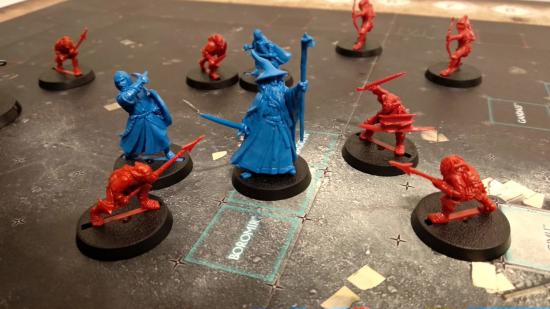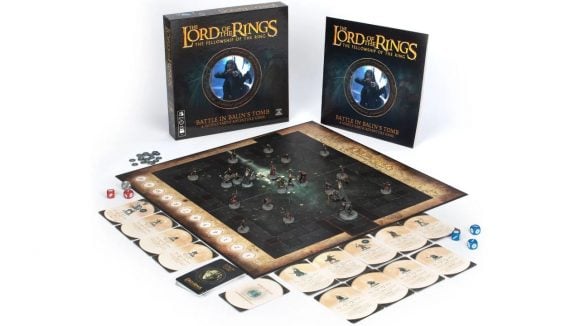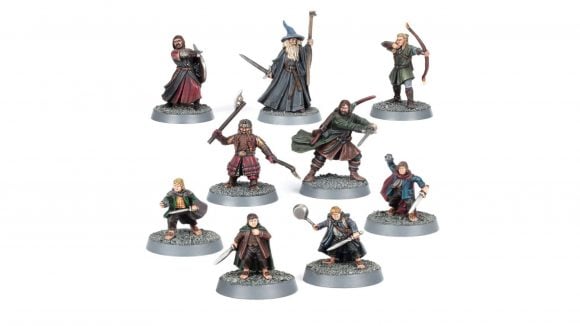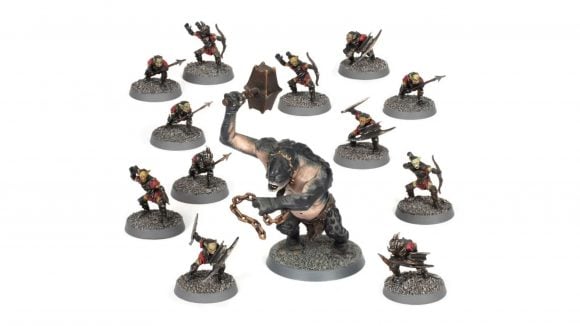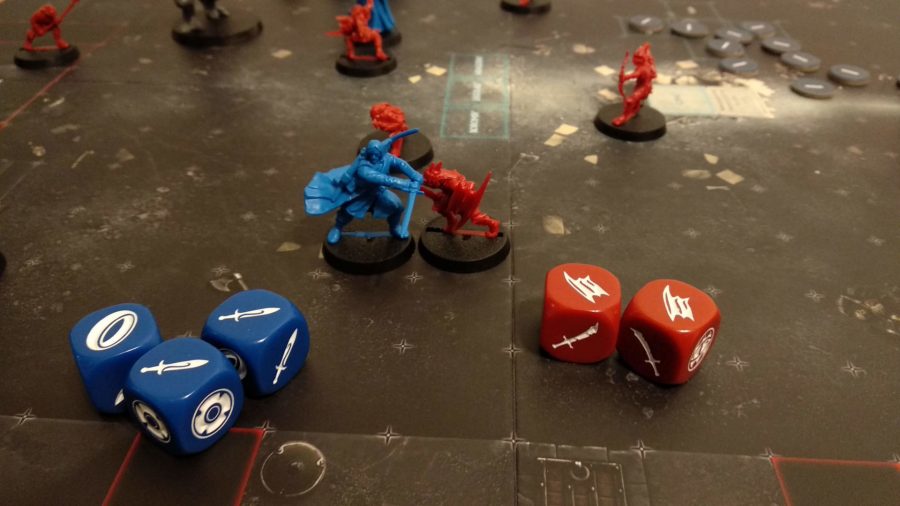When it comes to playing on the tabletop, is there anything more dreaded than a ‘tie-in game’? They don’t exactly inspire confidence. Churned out to coincide with film releases, anniversaries, and other events, they have a deservedly ropey reputation. More often than not, they end up as half-baked titles that ride a temporary zeitgeist for a quick buck.
At first glance, Games Workshop’s latest board game, Battle in Balin’s Tomb, looks to be no different. A Lord of the Rings game released for the 20th anniversary of Peter Jackson’s The Fellowship of the Ring movie adaptation, it’s a slim title with a four-page rulebook and a screengrab from the film on its box art. Not encouraging stuff, which isn’t helped by the speed at which it was revealed and hurried out the door.
But to write the game off as just another cash grab that’s best left forgotten would be to do it a disservice. Is it a wasted opportunity that relies on the reputation of The Lord of the Rings brand to do its heavy lifting? Yes, absolutely. Is it also a streamlined arena battler with gorgeous minis that’s as action-packed as it is quick to play? Yes, that too. Since receiving a free review copy from Games Workshop, I’ve enjoyed the game, even if I won’t be cracking open its lid very often.
Battle in Balin’s Tomb is a two-player miniatures battler that recreates the Fellowship’s stand against the goblins of Moria. One player will control the Fellowship, while the other sends waves of goblins and, eventually, a cave troll to pick off as many of the heroes as they can within 12 tight rounds. This isn’t so much a tactical skirmisher as it is a game of survival; beat back the goblin hordes before you’re overrun, or pick off the heroes one by one until they’re left crumpled and defeated.
It’s remarkably simple. You could flick through the rulebook in ten minutes, and probably guess most of the particulars. Players take turns activating all of their units, moving them a set number of squares across the gridded map, before rolling the number of dice listed on their unit cards to attack adjacent enemies. The target of each attack then gets the chance to roll some defence dice, leaving you to compare who scored the most sword or shield icons to determine damage.
There’s a little more to it than that, but not much. The heroes of the Fellowship all have special abilities that will be randomly activated when the One Ring symbol is rolled – such as Gandalf’s ability to perform an additional attack – and passive buffs give them some distinctiveness, including Boromor’s ability to reroll the defence dice of adjacent Fellowship members. The three types of Moria goblins have some peculiarities, too, but they make little difference in the actual flow of the game.
It’s fast, it’s streamlined, and involves lots and lots of dice rolling. This is not a game in which you’ll be carefully manoeuvring your units in a tense battle, or chaining together attack combos in meticulous detail. The goblins are best served by rushing directly towards the nearest enemy and spamming as many attacks as possible, ranged abilities and defensive manoeuvres be damned. Similarly, the Fellowship will spend most of the game protecting the four hobbits from attack, while, again, attacking left, right, and centre as fast as possible.
If you’re looking for tactical depth, you won’t find it here. Battle in Balin’s tomb is all action, with a huge dollop of luck. You’ll be doing largely the same thing each turn, and following the same strategy every time you play.
Variety is introduced in the form of goblin cards, which replenish the dark forces’ dwindling troops with a random array of reinforcements each turn. It’s a delightful surprise to reveal where, and in what force, the goblins will be popping up each turn, which gives you some opportunities to catch your opponent off-guard. They didn’t expect a group of spearmen to climb up from the well? Now might be the perfect time to clear Frodo from the fight.
Don’t settle for less: These are the best board games to play
Similarly, the arrival of the cave troll acts as a genuinely foreboding set-piece. It’s big, tough, and can wipe out the weaker members of the Fellowship in a single blow, if you’re lucky. But when you get down to the game, it amounts to little more than another unit that’s best used as a battering ram to be plunged directly into the middle of the map.
Perhaps unsurprisingly, the standout feature of the game isn’t actually the game at all, but its miniatures. Taken directly from Games Workshop’s Middle-earth Strategy Battle Game, they’re of the quality you’d expect from Citadel. Containing the entire fellowship, twelve Moria goblins, and a cave troll, the Battle in Balin’s Tomb board game is an affordable way of netting some gorgeous Lord of the Rings miniatures, even if you have no intention of actually playing it.
And that’s a good thing, because you probably won’t be playing it much. After a couple of games, I have little desire to return to it. With its surface-level combat system, games run the same course every time. Although there’s a host of ‘challenges’ to test your mettle against – such as defeating the cave troll with one of the four hobbits – even these rely primarily on the luck of the dice.
Battle of Balin’s Tomb is a fun, lightweight board game that wouldn’t go amiss on a Christmas afternoon. But if you’re not interested in painting up its minis after retiring it to your shelf, your money is best spent elsewhere.
